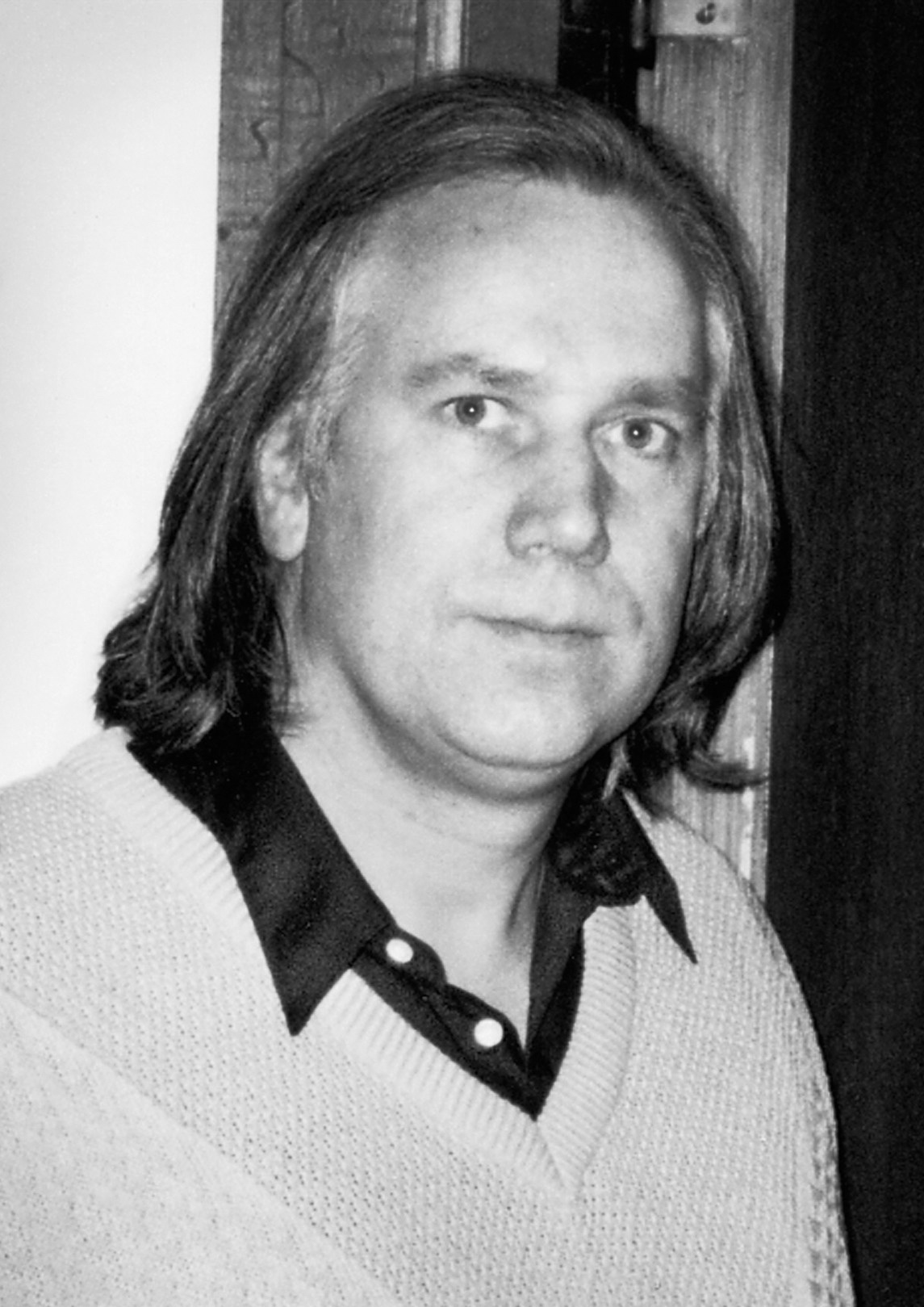Stories of the Navnath Sampradaya Lineage
Sri Jnaneshwar
1275 – 1296
Sri Jnaneshwar was a 13th-century Marathi saint, poet, philosopher and yogi of the Nath Vaishnava tradition. In his short life of 21 years, he authored Dnyaneshwari (a commentary on the Bhagavad Gita) and Amrutanubhav. These are the oldest surviving literary works in the Marathi language, and these are considered to be milestones in Marathi literature. Jnaneshwar’s ideas reflect the non-dualistic Advaita Vedanta philosophy and an emphasis on Yoga and oneness of Vishnu and Shiva. His legacy inspired saint-poets such as Eknath and Tukaram, and he has been one of the foundations of the Varkari Bhakti movement tradition of Hinduism in Maharashtra.
Jnaneshwar is considered to be the first Guru of the Navnath Sampradaya lineage.
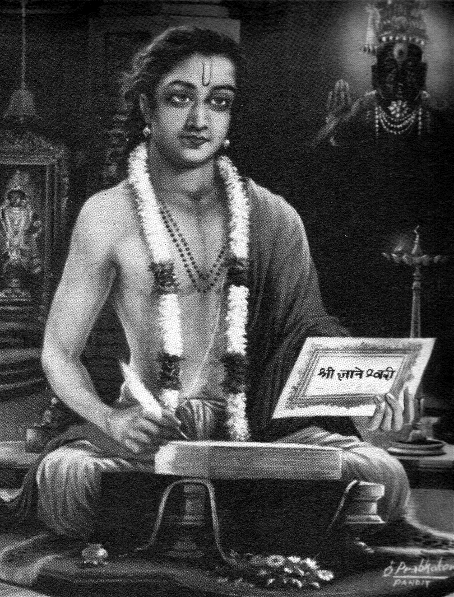
Sri Jnaneshwar
Sri Bhausaheb Maharaj
1843 -1914
Sri Bhausaheb Maharaj was the founder of the Inchegeri Sampradaya, to which Nisargadatta Maharaj belongs.
According to Kotnis, Bhausaheb Maharaj was looked upon as the reincarnation of Sant Tukaram (1577 – 1650), a prominent Varkari Saint and spiritual Bhakti poet, who had taken birth again to finish his work of spreading the knowledge of Self-realisation.
He met his guru Sri Nimbargi at the age of fourteen. After his awakening he was authorised by Nimbargi to carry on the lineage and established the Inchegeri Sampradaya. His teachings comprised of the way of meditation.
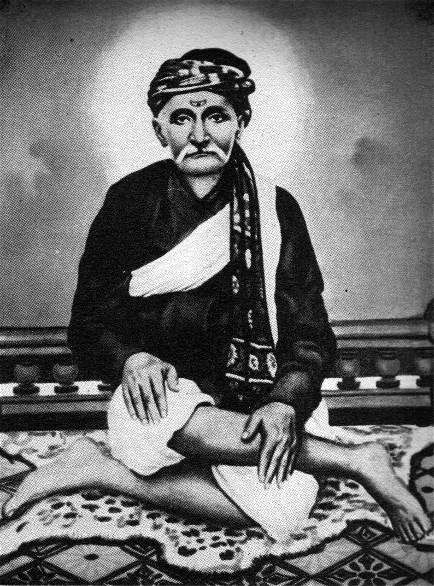
Sri Bhausaheb Maharaj
Sri Siddharameshwar Maharaj
1888 – 1936
Sri Siddharameshwar Maharaj was a guru in the Inchegiri Sampradaya founded by his guru Sri Bhausaheb Maharaj, a branch of the Navnath Sampradaya, the ‘Nine Masters’ tradition in India.
Siddharameshwar was born in 1888. Since his childhood he was very intelligent and demonstrated a profound receptivity. He married at the age of 18. In 1906 he was initiated by his guru Sri Bhausaheb Maharaj, who taught mantra meditation as the way to reach enlightenment. In 1914 Bhausaheb died. Deeply affected by the loss of his Guru, Siddharameshwar, he dropped his job at a cotton company and starts wandering, practically without any food.
Around 1919 he started an extreme period of only meditating, which lasted for 9 months. His Master Bhausabeb had taught him Nama- mantra, the continuous meditation on one of God’s names. Siddharameshwar feels that this is not enough for him. By meditating for a very long time he realised what is prior to meditation and awakened.
In 1920, Siddharameshwar set out on ‘the Bird’s Path’*, the fast way to attain realisation through discernment, six years after Bhauhaseb Maharaj had died. His fellow-students opposed him, but eventually he succeeded by himself.
Siddharameshwar travelled a lot for his work at a lawyer’s firm and taught wherever he was. His wife and children lived with his parents.
Nisargadatta met him in Mumbai in 1933 during a satsang. A few days later Siddharameshwar initiated him. This had a powerful impact on Nisargadatta. From then on, he attended every satsang, whenever Siddharameshwar was in Mumbai and travelled regularly to see him in other cities too.
Siddharameshwar died at the age of 48. It is said that dozens of his disciples became self-realised through his clear and lucid teaching.
Siddharameshwar was one of the contemporaries of Sri Ramana Maharshi.
* The Bird’s Path is through attending to what is true through direct experience. It is contrasted with the Ant’s Path of selfrealisation through meditation and mantra, as instructed by Siddharameshwar’s master Bhausabeb.
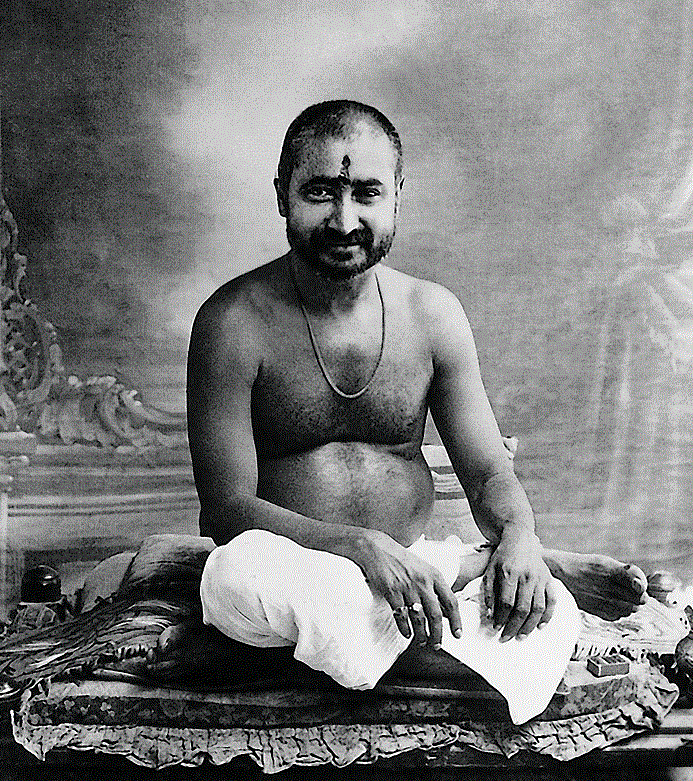
Sri Siddharameshwar Maharaj
Sri Nisargadatta Maharaj
17 April 1897 – 8 September 1981
Sri Nisargadatta Maharaj, born Maruti Shivrampant Kambli, was a guru of nondualism, belonging to the Inchagiri Sampradaya, a lineage of teachers from the Navnath Sampradaya and Lingayat Shaivism.
The publication in 1973 of I Am That, an English translation of his talks in Marathi by Maurice Frydman, brought him worldwide recognition and followers, especially from North America and Europe.
Nisargadatta was born on 17 April 1897 to Shivrampant Kambli and Parvati bai, in Bombay. The day was also the birthday of Hanuman, hence the boy was named ‘Maruti’, after him.
His parents were followers of the Varkari Sampradaya, an egalitarian Vaishnavite bhakti tradition which worships Vithoba. His father, Shivrampant, worked as a domestic servant in Mumbai and later became a petty farmer in Kandalgaon.
Maruti Shivrampant Kambli was brought up with his two brothers, four sisters and deeply religious parents. In 1915, after his father died, he moved to Bombay to support his family back home, following his elder brother. Initially he worked as a junior clerk at an office but quickly he opened a small goods store, mainly selling beedis: leaf-rolled cigarettes, and soon owned a string of eight retail shops. In 1924 he married Sumatibai and they had three daughters and a son.
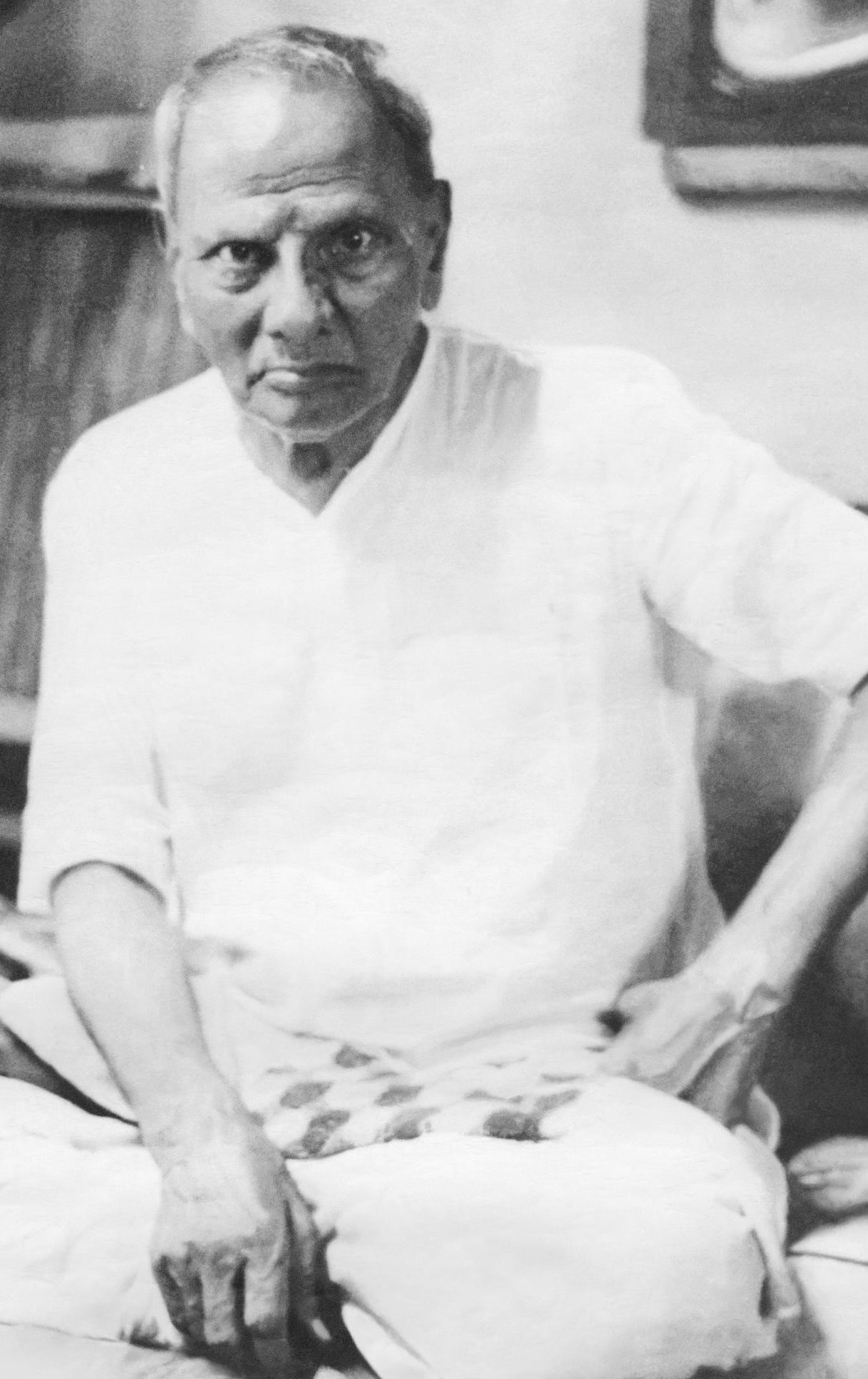
Sri Nisargadatta Maharaj
In 1933, he was introduced to his guru Siddharameshwar Maharaj, the head of the Inchegiri branch of the Navnath Sampradaya, by his friend Yashwantrao Baagkar. His guru told him: “You are not what you take yourself to be.” Siddharameshwar initiated him into the Inchegiri Sampradaya, giving him meditation-instruction and a mantra, which he immediately began to recite. Siddharameshwar gave Nisargadatta instructions for self-enquiry which he followed verbatim, as he himself recounted later:
“My Guru ordered me to attend to the sense ‘I am’ and to give attention to nothing else. I just obeyed. I did not follow any particular course of breathing, or meditation, or study of scriptures. Whatever happened, I would turn away my attention from it and remain with the sense ‘I am’. It may look too simple, even crude. My only reason for doing it was that my Guru told me so. Yet it worked!”
Following his guru’s instructions to concentrate on the sense of ‘I Am’, he used all his spare time in silence in deep reflection, and remained in that state for the coming years, meditating and singing devotional bhajans.
“My Guru told me: Go back to that state of pure being, where ‘I am’ is still in its purity before it got contaminated with ‘I am this’ or ‘I am that.’ Your burden is of false self-identifications. Abandon them all.”
“My guru told me: Trust me, I tell you, you are Divine. Take it as the absolute truth. Your joy is divine, your suffering is divine too. All comes from God. Remember it always. You are God, your will alone is done.”
“I did believe him and soon realised how wonderfully true and accurate were his words. I did not condition my mind by thinking, “I am God, I am wonderful, I am beyond.” I simply followed his instruction, which was to focus the mind on pure being, ‘I am’, and stay in it. I used to sit for hours together, with nothing but ‘I am’ in my mind and soon the peace and joy and deep all-embracing love became my normal state. In it all disappeared – myself, my guru, the life I lived, the world around me. Only peace remained, and unfathomable silence.”
(I Am That, dialogue 51, April 16, 1971).
After an association that lasted hardly two and a half years, Siddharameshwar Maharaj died on November 9, 1936. In 1937, Maharaj left Mumbai and travelled across India. After eight months he returned to his family in Mumbai. On the journey home his state of mind changed, realising that ‘nothing was wrong anymore.’ He spent the rest of his life in Mumbai, maintaining one shop to earn an income.
Between 1942 – 1948 he suffered two personal losses, first the death of his wife, Sumatibai, followed by the death of his daughter. He started to give initiations in 1951, after a revelation from his guru, Siddharameshwar Maharaj.
After he retired from his shop in 1966, Nisargadatta Maharaj continued to receive and teach visitors in his home, giving discourses twice a day, until his death on 8 September 1981 at the age of 84.
Nisargadatta gave satsang at his humble flat in Mumbai, where a mezzanine room was created for him to receive disciples and visitors. This room was also used for daily chantings, bhajans (devotional songs), and meditation sessions.
Initially, from its inception in the early 19th century, the Inchagiri Sampradaya emphasised mantra meditation, but the emphasis shifted toward a form of Self-enquiry with Sri Siddharameshwar.
Nevertheless, Sri Nisargadatta Maharaj still gave mantra initiation, with the underlying point being that the mantra was more than sound, it was the Absolute Itself which could be reverberated throughout life in all circumstances.
Nisargadatta adopted a different mode of instruction, through questions and answers, for his Western disciples. Many of Nisargadatta Maharaj’s talks were recorded, and formed the basis of the book ‘I Am That’ as well as of the several other books.
Nisargadatta’s only subject was our real Identity as the birthless-deathless, infinite-eternal Absolute Awareness or Parabrahman, and Its play of emanated universal consciousness. For Maharaj, our only imagined problem is a case of mistaken identity: “We presume to be an individual, and, originally and fundamentally, we are not an individual, we are intrinsically always and only the Absolute. “
Nisargadatta explains: “The life force and the mind are operating of their own accord, but the mind will tempt you to believe that it is ‘you’. Therefore understand always that you are the timeless spaceless witness. And even if the mind tells you that you are the one who is acting, don’t believe the mind. The apparatus (mind, body) which is functioning has come upon your original essence, but you are not that apparatus.”
Awareness of the Absolute could be regained by a radical disidentification from the dream of ‘me and my world’ via intensely meditative self-inquiry and supreme Wisdom-Knowledge.
Nisargadatta was critical of a merely intellectual approach to nondual Truth. He had a strong devotional zeal towards his own guru, and suggested the path of devotion, Bhakti yoga, to some of his visitors, as he believed the path of knowledge, Jnana yoga was not the only approach to Truth. Nisargadatta also emphasised love of Guru and God, and the practice of mantra repetition and singing bhajans, devotional songs.
“This dwelling on the sense ‘I am’ is the simple, easy and natural Yoga, the Nisarga Yoga. There is no secrecy in it and no dependence; no preparation is required and no initiation. Whoever is puzzled by his very existence as a conscious being and earnestly wants to find his own source, can grasp the ever-present sense of ‘I am’ and dwell on it assiduously and patiently, till the clouds obscuring the mind dissolve and the heart of being is seen in all its glory.”
Nisargadatta did not prescribe a specific practice for Self-knowledge but advised his disciples: “Don’t pretend to be what you are not, don’t refuse to be what you are.” By means of self-enquiry in the tradition of Advaita Vedanta, he advised: “Why don’t you enquire how real are the world and the person?”
Nisargadatta frequently spoke about the importance of having the ‘inner conviction’ about one’s true nature and without such Self-knowledge one would continue to suffer. Nisargadatta claimed that the names of the Hindu deities Shiva, Rama and Krishna were the names of nature (Nisarga) personified, and that all of life arises from the same non-dual source or Self. Remembrance of this source was the core of Nisargadatta’s message:
“You are not your body, but you are the consciousness in the body, because of which you have the awareness of ‘I am’. It is without words, just pure beingness. It has become soul of the world. In the absence of your consciousness, the world will not be experienced. Hence, you are the consciousness. Remember what you have heard, meditate on it. Meditation means you have to hold consciousness by itself. The consciousness should give attention to itself. This consciousness is Ishwara. As there is no God other than this consciousness. Worship it.”
“The knowledge ‘I am’ is God. It is Ishwara, as well as maya. Maya is God’s power. All the names of God are of this consciousness only in different forms. Remember the fact ‘I am not the body’ and get firmly established. That is the sign of a true seeker.”
The Seven Principles of Nisarga Yoga
-
Non-identification and right understanding
-
Interest and earnestness
-
Spontaneity and effortlessness
-
Attentiveness to being
-
Right action
-
Going within to go beyond
-
Awareness of Self
The succession of Gurus in the Inchagiri Sampradaya
David Godman gives the following account of an explanation by Nisargadatta of the succession of Gurus in the Inchagiri Sampradaya:
“I sit here every day answering your questions, but this is not the way that the teachers of my lineage used to do their work. A few hundred years ago there were no questions and answers at all. Ours is a householder lineage, which means everyone had to go out and earn his living. There were no meetings like this where disciples met in large numbers with the Guru and asked him questions. Travel was difficult. There were no buses, trains and planes. In the old days the Guru did the traveling on foot, while the disciples stayed at home and looked after their families. The Guru walked from village to village to meet the disciples. If he met someone he thought was ready to be included in the sampradaya, he would initiate him with mantra of the lineage. That was the only teaching given out. The disciple would repeat the mantra and periodically the Guru would come to the village to see what progress was being made. When the Guru knew that he was about to pass away, he would appoint one of the householder-devotees to be the new Guru, and that new Guru would then take on the teaching duties: walking from village to village, initiating new devotees and supervising the progress of the old ones.”
According to David Godman, Nisargadatta was not allowed by Siddharameshwar to appoint a successor, because ‘he wasn’t realised himself when Siddharameshwar passed away.’ Nisargadatta started to initiate disciples in 1951, after receiving an inner revelation from Siddharamesvar. Nisargadatta himself explains:
“The Navnath Sampradaya is only a tradition, a way of teaching and practice. It does not denote a level of consciousness. If you accept a Navnath Sampradaya teacher as your Guru, you join his Sampradaya. Usually you receive a token of his grace – a look, a touch, or a word, sometimes a vivid dream or a strong remembrance.
* A lot of this information has been assemled by Philip Renard. With his kind permission this is used for this website.
Alexander Smit (Sri Parabrahmadatta Maharaj)
Rotterdam 21 October 1948 – Amsterdam 20 June 1998
Life’s essential questions brought Alexander in September 1978 to Sri Nisargadatta Maharaj. His friend Wolter Keers had made him aware of this great Guru.
I was not searching anymore, I knew everything. But had you asked me what I had really understood, I would have answered: “Actually I don’t know, something essential I do not know. There was a blind spot in me and nobody could help me with this. Krishnamurti did not know what to say on this. Osho was for us not the one to go to, at least not for matters like this. Da Free John was also not the one to go to. In those days these were the people that were known. I had a blind spot. And it is typical for ‘a blind spot’ that you do not know what it is. You only know that, being very honest, going to the root into yourself, you have not solved the riddle.”
(From an interview with Belle Bruins, September 1988)
After just a few satsangs with Nisargadatta, Alexander realised his true nature.
One year after returning to the Netherlands, Alexander started to give satsang.
“Who are you? What are you here for?” were his opening questions to somebody who came to satsang for the first time.
